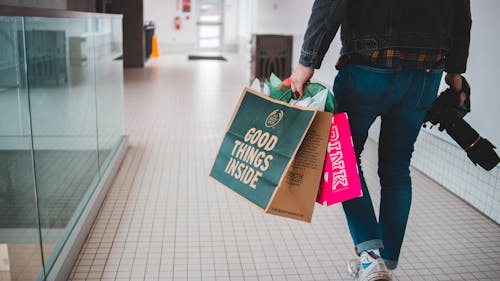ZHIVOTOVSKI: In-store shopping is dying
Column: Are You Thinking What I Am Thinking?

As the holiday season approaches and I find myself looking for the best deals out there, I have had the realization that almost none of my shopping plans involve physically entering a store.
Frankly, the idea of shopping in person, especially during the holiday season, sounds like a nightmare.
When I think about holiday shopping, I immediately picture large and frantic crowds. But during the times I have actually gone to shop in person, I experienced just the opposite — an almost empty store, devoid of both shoppers and employees.
What has led to the desertion of the retail space, and is it even worth salvaging?
The emergence of online shopping has become the death of the in-person retail market, and for good reason. Online shopping is a convenient alternative for many shoppers, allowing them to peruse virtual aisle upon aisle without ever leaving the comfort of their homes.
Recalling the last time I entered a physical retail space, the aisles were half empty. Inventory in stores is a shadow of the exact same store's online catalog.
What incentive do I have to shop in person when most of the time I will be referred at the register to order the item online anyway?
Not only do online inventories provide more choices for the products I want and even suggest similar ones, but I can also use most companies' websites to check the real-time availability of products without ever entering a physical store. This saves me the trip and my time.
The online market is also a space of comfort for many shoppers. The physical act of online shopping is a cathartic experience for many, and I myself have multiple active carts filled with products that I simply enjoyed browsing the website for.
Being able to shop online has also provided comfort to customers who are uncomfortable going into stores to try on products or request various sizes.
This issue is especially prevalent for plus-sized shoppers, whose clothing sizes are often not stocked in physical stores, which can present challenges in accessibility and comfort.
Many online stores are more likely to offer a wider range of sizes, and some may provide a detailed sizing guide and allow customers to order multiple sizes to their homes. This allows them to truly figure out what works best for them without any potential judgment from employees.
Perhaps if the in-person shopping experience was smoother, then shoppers would be more likely to go to stores. But this is not the case, and the fault lies with the stores themselves.
Many stores are unwilling to invest in the resources needed to improve in-person shopping, such as a larger inventory of products and more workers.
How many times have you gone to a store where only 2 out of 10 registers were open? Or how many times have you searched the aisles for assistance from an employee only to wander aimlessly without finding a single worker?
A vicious cycle is in play in the retail space. With fewer people shopping in person, stores are lowering the number of products and workers, which in turn is attracting fewer and fewer people to shop in stores.
If no one wants to engage in the in-person shopping experience, and you make no effort to entice shoppers to stay in stores, then it is no surprise sales will go down.
While online shopping can be more convenient and accessible to consumers, online storefronts are far from being perfect. Studies show that there is a large discrepancy between what shoppers value in online shopping and how important retailers feel these qualities are.
For example, many shoppers view free shipping and the ease of returns as some of the most important qualities in the retail experience, while retailers severely undervalue the importance of these traits.
This discrepancy keeps the shopping experience from being as seamless as it could be.
Stores must address and invest in the sectors of their businesses that customers value most instead of simply guessing at which flashy holiday sale will attract shoppers.
Emily Zhivotovski is a senior in the School of Arts and Sciences majoring in cell biology and neuroscience and minoring in health and society. Her column, "Are You Thinking what I am Thinking," runs on alternate Wednesdays.
*Columns, cartoons and letters do not necessarily reflect the views of the Targum Publishing Company or its staff.
YOUR VOICE | The Daily Targum welcomes submissions from all readers. Due to space limitations in our print newspaper, letters to the editor must not exceed 900 words. Guest columns and commentaries must be between 700 and 900 words. All authors must include their name, phone number, class year and college affiliation or department to be considered for publication. Please submit via email to oped@dailytargum.com by 4 p.m. to be considered for the following day's publication. Columns, cartoons and letters do not necessarily reflect the views of the Targum Publishing Company or its staff.



